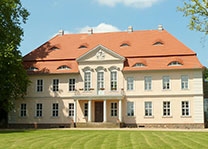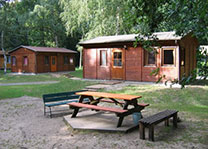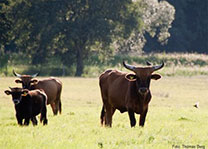No bulldozer method, please!
Wilderness friends have already been expected to do a lot in Brandenburg’s only national park. For years, new dykes, inlet and outlet structures were built in the Fiddichower Polder (10) in already designated or planned total reserves, as well as a new road next to a new pipeline for industry. Construction machinery noise instead of the twittering of birds filled the landscape. The national park administration has always turned a good face into a bad game.
Now, however, the national park administration is using heavy equipment to intervene in a total reserve in the Gartzer Schrey and in the Staffelder polder (8) that has existed for a long time. Well-known conservationists, such as the local Axel Bieseke or the former head of the Schorfheide-Chorin biosphere reserve and former Brandenburg Environment Minister Eberhard Henne, protest, and the chairman of the state-owned national park support association, Andreas Hungeling, former PCK managing director, who was founded by administrative director Treichel himself, is protesting for this reason among other things.
This critique should make you think, the critics aren’t some green nutcase. The national park administration is requested to seek discussion and to involve the critics. Otherwise she will lose all support from the volunteer conservationists. The bulldozer method is the wrong one here, in the truest sense of the word. Conversations can help and heal here.
Even in so-called total reserves, which are now called wilderness development areas, there are good reasons to intervene cautiously in the landscape before they are finally designated, for example by planting black poplars, oaks or elms. Other measures, such as closing drainage ditches, also make perfect sense in view of the increasing drought. But they should be done cautiously, gently and in close consultation with those affected. The allegation in the room: Here civil servants preach water to other people who drink wine and take out rights that they deny others, is extremely dangerous. Finding a consensual solution would now be the first duty of the head of the national park administration.
Apparently we have here again the situation typical of the Brandenburg administration that available funds have to be spent shortly before the cash desk closes. In this case, the means for compensatory and replacement measures for the severe interventions in the natural balance caused by the construction of the dyke in the national park. The National Park Association had recommended several times that these funds should be invested in forest initial measures (black poplar, oak, elm) in the almost completely deforested polder that were both technically and locally sensible. But the administration — as always — did not follow this nature conservation proposal of the association on principle. Now she feels compelled to spend meaningful money on senseless, even harmful building measures in the heart of the national park so that they do not expire.
Thomas Berg (CEO)








